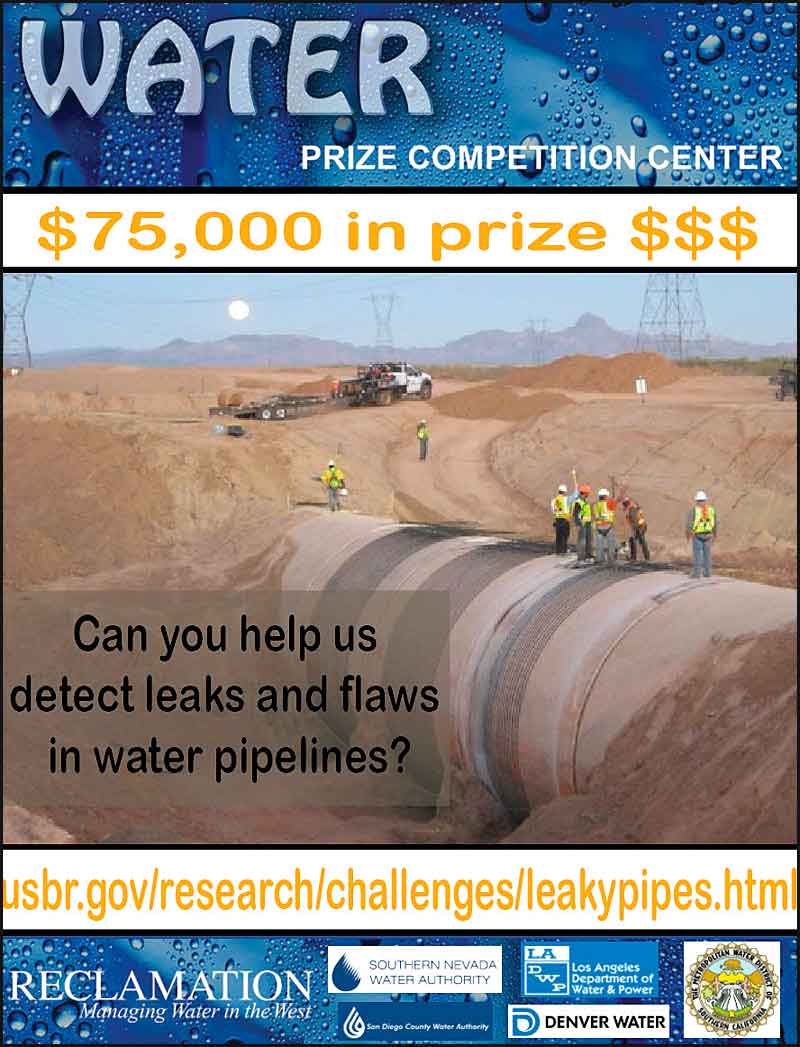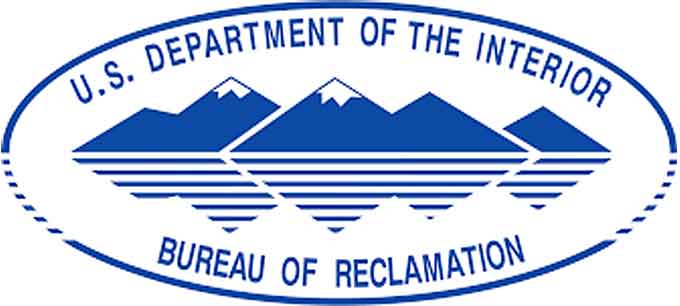
The Bureau of Reclamation has launched a new prize competition seeking innovative new methods and technologies to detect leaks and flaws in large buried pipelines that deliver water for municipal, industrial, and agricultural uses.
Currently, no practical method exists to detect leaks and flaws in large diameter pipelines.
Reclamation’s water conveyance system includes over 20,000 miles of buried pipelines made of various materials including metal, plastic, concrete, and composite.
Municipal water utility collaborators also have extensive transmission and distribution pipeline networks.
Pipeline components, such as joints, fittings, valves, and individual pipe sections, are subject to leakage due to damage, corrosion, and other types of degradation.
(The Bureau of Reclamation and its collaborators are seeking innovative methods and technology to detect leaks and flaws in buried water pipeline infrastructure. Pipeline leaks and flaws deprive consumers of a valuable resource and necessitate costly repairs. Solutions can be novel approaches or can build upon existing methods or technologies. Courtesy of ehe Bureau of Reclamation and YouTube. Posted on Mar 7, 2018)
Reclamation and our collaborators are seeking methods and technologies that can reliably and easily detect leaks and flaws in operating, pressurized water pipeline infrastructure regardless of size, depth of burial, pipe material or interior lining.
For example, leaks in pipes delivering treated drinking water result in billions of gallons of water lost annually, an amount that could fill more than three million Olympic-size swimming pools.
Detecting water loss from pipelines will trigger appropriate maintenance, allowing conservation of scarce water resources and more reliable service to clients.
Detecting leaks and flaws early is the key to solving this problem and preventing the loss of valuable and scarce water resources.
This competition is focused on finding condition assessment solutions for steel pipe and prestressed concrete cylinder pipe with diameters greater than 48 inches.
However, proposed solutions that can be applied to all size and type of pipelines in a wide variety of uses will be considered.

















